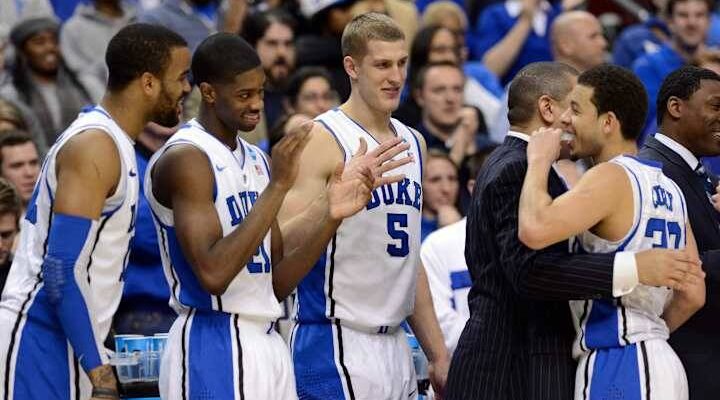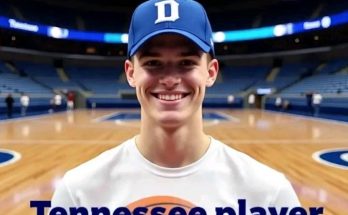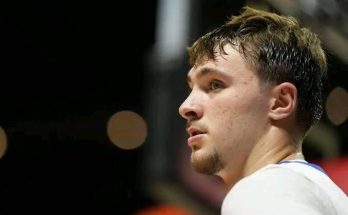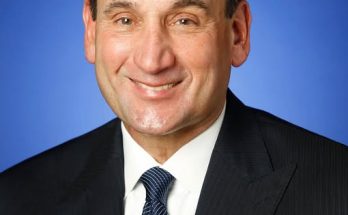The recent news of Mason Plumlee reuniting with old teammates in Charlotte marks a strategic move by the Hornets, one that many observers are finding surprising. In the dynamic and often unpredictable world of NBA roster construction, every transaction, especially one involving a veteran big man like Plumlee returning to a former team, carries layers of rationale that may not be immediately apparent to the casual observer. This particular move, however, speaks volumes about the Hornets’ current philosophy, their short-to-medium term goals, and their assessment of the team’s needs heading into the 2025-2026 season.
At first glance, the surprise is understandable. Mason Plumlee, while a highly respected veteran, is not a flashy, high-scoring center. His previous stint with the Hornets (2021-2023 seasons) saw him primarily as a reliable starter, known for his passing from the high post, solid screen-setting, and workmanlike rebounding, but also for his limitations in terms of scoring punch and defensive versatility against elite bigs. He was eventually traded to the Los Angeles Clippers in February 2023. For him to return, especially if the team has moved on to younger talent at the center position since his departure, requires a deeper look into the Hornets’ current strategic thinking.
Several interconnected reasons likely underpin this seemingly surprising reunion:
- Veteran Leadership and Culture Setting: This is arguably the most crucial rationale. The Hornets, despite having promising young talent in players like LaMelo Ball, Brandon Miller, and likely others drafted in 2024 or 2025, have often lacked consistent veteran presence and established winning habits. Plumlee, now entering his likely 13th NBA season (by 2025-26), brings a wealth of experience from playoff teams (Denver Nuggets, LA Clippers) and has played alongside true superstars. He understands the grind of an NBA season, the importance of professionalism, and how to operate within a team concept.
- For a young, developing squad, having a reliable veteran who can communicate expectations, demonstrate proper habits, and serve as an extension of the coaching staff on the floor is invaluable. He won’t be expected to be the primary scorer, but rather the quiet leader who guides the younger bigs (e.g., Mark Williams, Nick Richards, or any new draft picks) and teaches them the nuances of NBA defense, pick-and-roll coverage, and offensive positioning.
- Familiarity and System Fit: Plumlee has already played under the Hornets’ system and alongside many of the current players, including LaMelo Ball. This eliminates the learning curve typically associated with new signings. He understands the team’s offensive principles (e.g., emphasis on cutting, transition play, ball movement) and defensive schemes. His passing ability from the elbow is a natural fit for a team with dynamic cutters and shooters.
- His reunion with “old teammates” suggests existing chemistry that can be quickly rekindled, leading to seamless integration into the rotation without disrupting established dynamics.
- Mentorship for Young Bigs: The Hornets have invested in young centers like Mark Williams, whose development is paramount. Plumlee’s return isn’t necessarily to block Williams’ growth, but to accelerate it. Plumlee can serve as a direct mentor, teaching Williams (and other young frontcourt players) the intricacies of screen-setting, rebounding angles, post defense, footwork, and understanding defensive rotations – lessons best learned from an experienced peer who plays the same position.
- This is a calculated move to provide a seasoned professional example and direct coaching for their long-term center prospects.
- Reliable Depth and Insurance: While the Hornets aim for their younger bigs to flourish, having a proven, durable veteran like Plumlee provides crucial insurance against injuries or inconsistent play. He can step into a starting role if needed or provide stable minutes off the bench, ensuring the team always has a competent presence at center.
- His presence mitigates risk and provides a safety net, which is particularly important for a team pushing for playoff contention but still reliant on developing talent.
- Specific Skill Set Complement: Plumlee’s unique passing ability for a center adds a different dimension to the Hornets’ offense. He can operate as a hub at the high post, facilitating cuts and finding open shooters, complementing LaMelo Ball’s primary playmaking. His screening helps free up shooters like Brandon Miller and Miles Bridges (if still with the team). While not a volume scorer, his efficiency in specific offensive actions can be valuable.
- He offers a specific, complementary skill set that enhances the team’s offensive flow without demanding a high usage rate.
- Contract Value (Implicit): While the contract details aren’t provided, the “surprising” aspect might imply that the Hornets secured him on a team-friendly deal. Even if it’s not a minimum contract, it’s likely a deal that fits within their cap structure and offers good value for his expected contributions as a veteran role player and mentor.
The return of Mason Plumlee, particularly in the context of it being a “strategic move,” indicates several things about the Hornets’ current trajectory:
- Serious About Playoff Contention: They are not just developing; they are looking to win now and push for playoff contention. Bringing in a reliable veteran like Plumlee signals a desire to stabilize the rotation and add experience that helps close out games.
- Emphasis on Development Over Immediate Flash: This move prioritizes subtle contributions, leadership, and long-term player development over signing another high-volume scorer or an unproven, flashy player. It’s a pragmatic approach to team building.
- Trust in Coaching and Front Office Philosophy: It demonstrates trust in the strategic vision of the coaching staff and front office (presumably still led by Mitch Kupchak or a new GM who shares this philosophy) to integrate veterans effectively for the benefit of the young core.
- Patience with Young Bigs: The move suggests patience with the development of players like Mark Williams. Instead of forcing them into roles they might not be ready for, they are providing a veteran bridge and a learning opportunity.
The “many find surprising” aspect could stem from:
- Age Profile: Some might expect the Hornets to continue exclusively with younger players, and Plumlee’s age might seem counter to a “youth movement.”
- Previous Trade: His earlier departure might have led some to believe a reunion was unlikely.
- Limited Offensive Upside: Analysts focused purely on box score stats might overlook Plumlee’s less quantifiable contributions like screening, passing, and leadership.
- Focus on Flashier Names: The NBA rumor mill often links teams to bigger-name free agents, making a sensible, role-player signing seem less exciting.
In conclusion, Mason Plumlee’s reunion with the Charlotte Hornets, while initially surprising to many, is a deeply strategic and logical move for the franchise heading into the 2025-2026 season. It’s a calculated decision to prioritize veteran leadership, facilitate the development of their promising young bigs, add reliable depth, and integrate a familiar, complementary skillset into their system. This move underscores the Hornets’ commitment to a pragmatic approach to team building, balancing their exciting young talent with the invaluable wisdom and experience necessary to truly compete and push for sustained success in the increasingly competitive landscape of the NBA.



